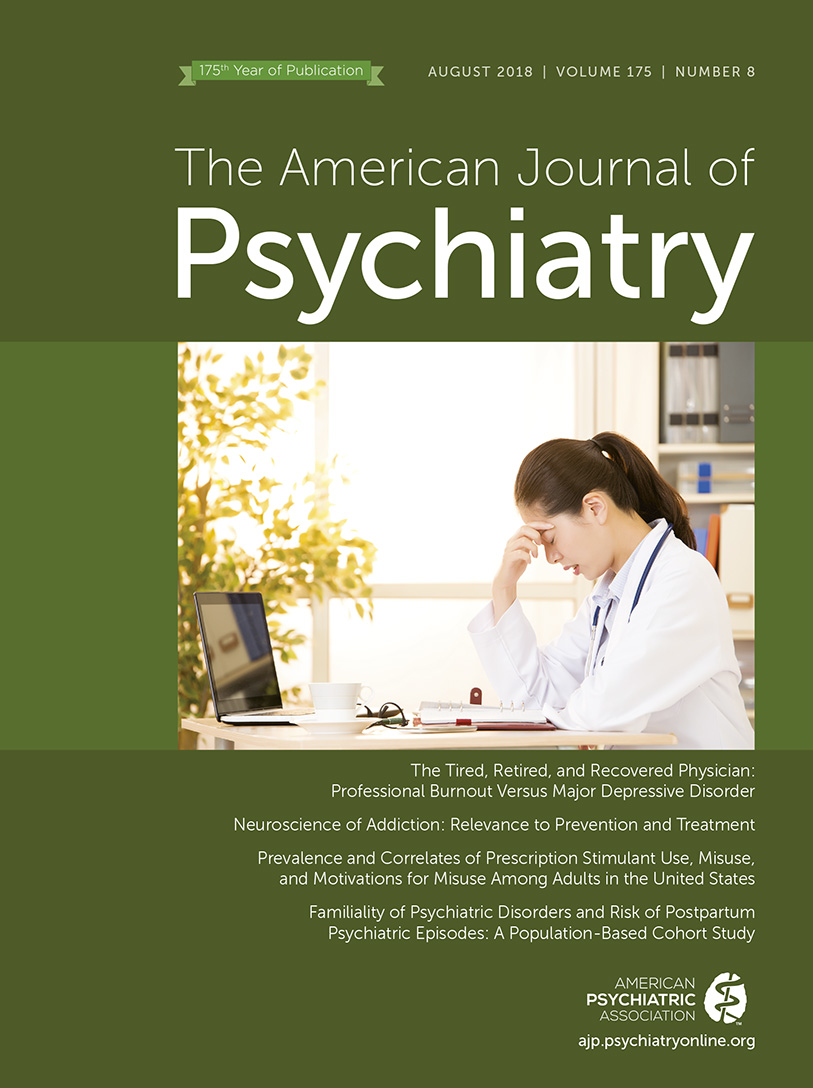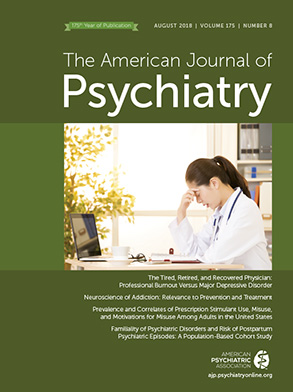The intense spotlight on opioids and the crucial role of prescribed opioids in the explosive overdose epidemic that has made overdose the leading cause of death for Americans younger than 50 highlights the need to refocus medicine on the practices of prescribing medications, especially controlled substances. In this issue of the
Journal, Compton et al. (
1) analyze data from the nationally representative National Survey on Drug Use and Health (NSDUH) to understand the characteristics of adults in the United States who use prescription stimulants medically or misuse them—that is, use them without having a prescription or use their prescribed medication in ways that are not indicated by their physicians. While past research has focused on younger populations, this study provides a contemporary view of the epidemiology of prescription stimulant use among adults in the United States.
The authors highlight the fact that prescriptions for stimulant medications for adults have increased more sharply than prescriptions for younger individuals during the past decade, with 55% of prescriptions for stimulants being written for patients over age 19 (
2). Information on the specific conditions for which these adults received prescriptions for stimulants is not provided, but these medications are widely used to treat ADHD and a variety of other disorders. The authors’ analyses show that 16 million adult Americans used a prescription stimulant during the past year. Of those, 11 million used these medications without signs of misuse, while 5 million misused a prescription stimulant, and an additional 400,000 met criteria for a prescription stimulant use disorder. It is as striking that about one in three users of prescription stimulants misused them as it is that only about 8% of misusers (or about 3% of those with prescriptions for stimulants) met diagnostic criteria for a substance use disorder.
Some prescribed medications, including stimulants, are controlled substances because they uniquely stimulate brain reward and are thus attractive to individuals with substance use problems. This characteristic is easily assessed in animal experiments, where the animals work for these specific drugs and not for other drugs that affect the brain but not brain reward. Moreover, animals will work harder for these specific drugs than for natural rewards (
3). Physicians routinely make controlled substances available to patients, often without regard to their abuse potential or to a patient history of substance use disorders.
Compton et al. found an increased risk for use of tobacco, cannabis, cocaine, hallucinogens, sedatives/tranquilizers, and opioids among individuals who use prescription stimulants without misuse compared with those who do not use prescription stimulants at all. The authors recognize that this finding is not surprising, because ADHD often co-occurs with substance use (
4). The implication of this finding for clinical practice is that substance use assessments should be routine when prescribing stimulant medications, including among individuals who are between 18 and 49 years old. These assessments are necessary for two reasons. First, substance use needs to be managed and addressed appropriately in adult patients with ADHD. Second, substance use can undermine successful treatment of ADHD symptoms. Attention and concentration difficulties can be the direct result of many forms of substance use as well as the result of poor sleep, which many substance users experience.
Moreover, as has been demonstrated consistently in research with younger individuals (
5), misuse of prescription stimulants was found to be associated strongly with the use of alcohol and other drugs, including cannabis, cocaine, and hallucinogens, and with misuse of sedatives/tranquilizers and opioids. Consistent with previous research (
6), only a small proportion of adult misusers of prescribed stimulants were found to use them frequently. This study shows that the large preponderance of the stimulant misuse is for quasi-therapeutic reasons, for example, to increase alertness, briefly and infrequently. Other studies have demonstrated that this “benefit” of nonmedical use is minimal (
7), and among college students, the nonmedical use of prescription stimulants is not associated with improvements in academic performance (
8).
Compton et al. observed striking associations between prescription stimulant use (with or without misuse) and experiencing major depressive episodes and suicidal ideation, as well as having asthma and utilizing emergency department services. These findings amplify the need to comprehensively assess and address comorbid psychiatric disorders and other health conditions when prescribing stimulant medications. When managing the care of individuals who have comorbid substance use disorder and ADHD, recent guidelines published by the International Collaboration on ADHD and Substance Abuse consensus group recommend a combination of pharmacotherapy and psychotherapy (
9).
Finally, the normalization of sharing and selling prescription medications fuels misuse. As has been shown in numerous other studies, Compton et al. found that the most common ways to obtain prescription drugs for misuse was from friends or family members for free or buying or stealing the medications from them.
The take-home messages for prescribing controlled substances generally and stimulants in particular are 1) to caution explicitly against diversion; 2) to assess substance use patterns routinely among patients; 3) to advise patients to use the medication only as prescribed and not in association with other substances, including alcohol; and 4) to closely monitor medication use and comorbid psychiatric symptoms and health problems.

